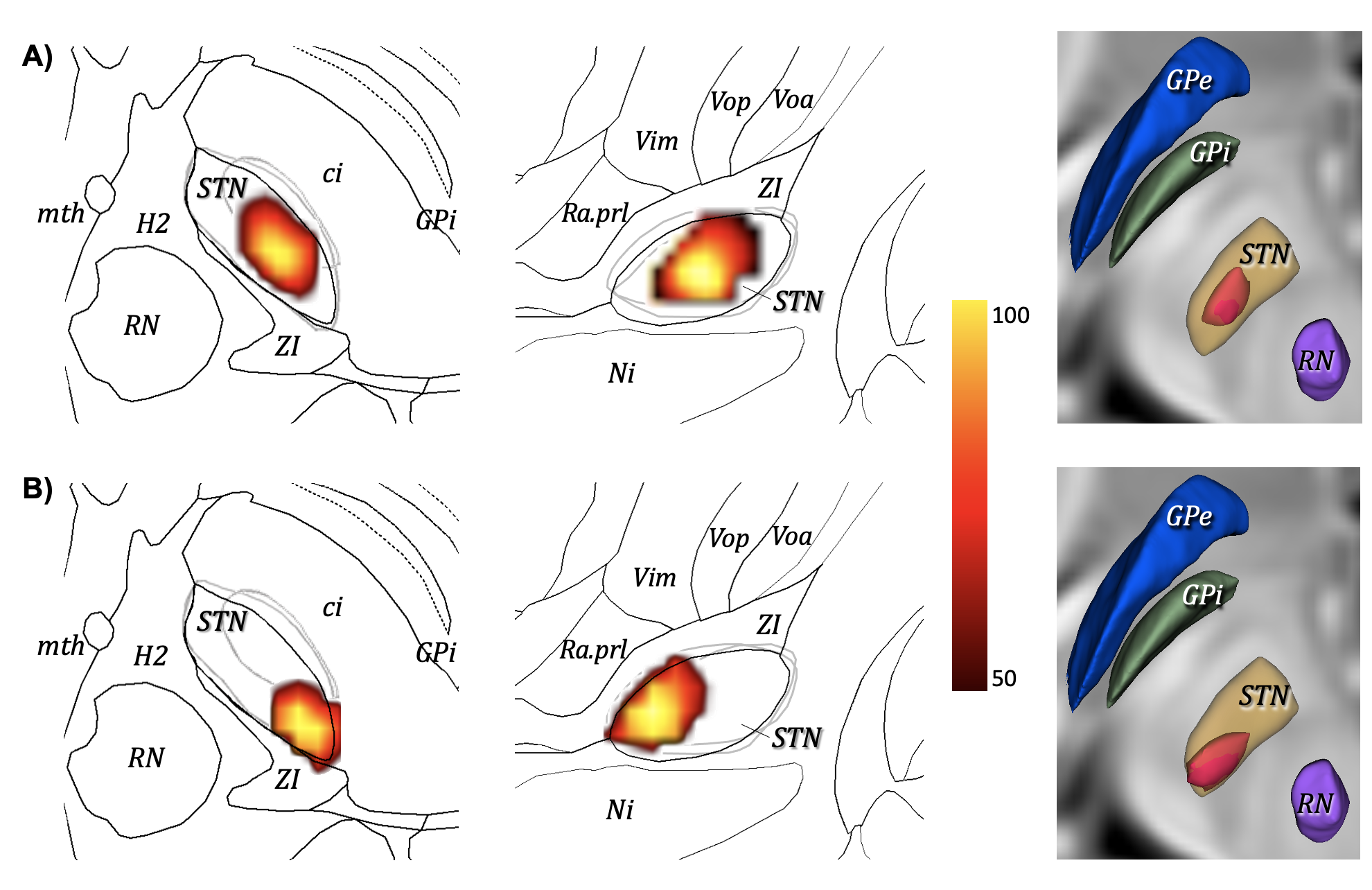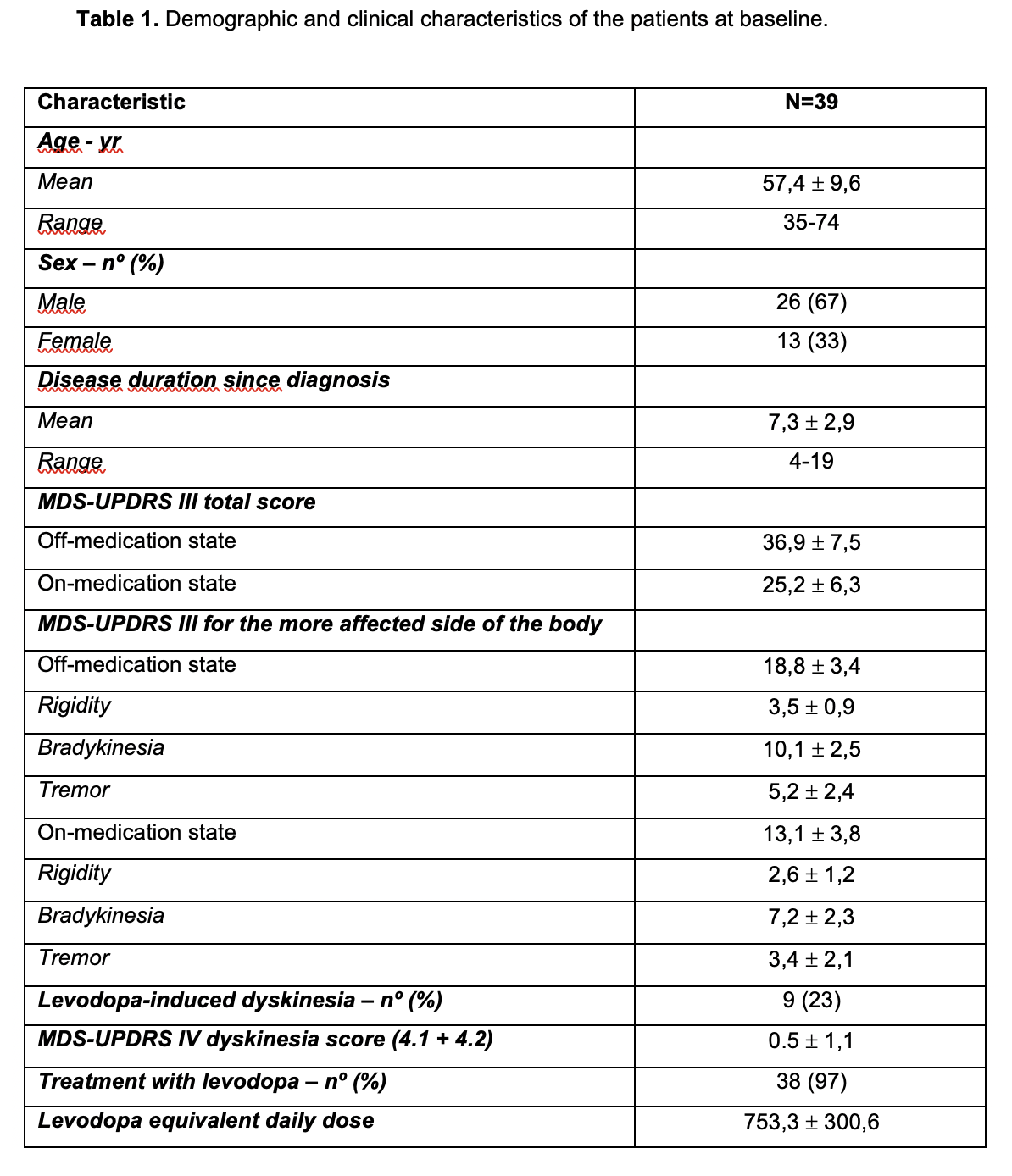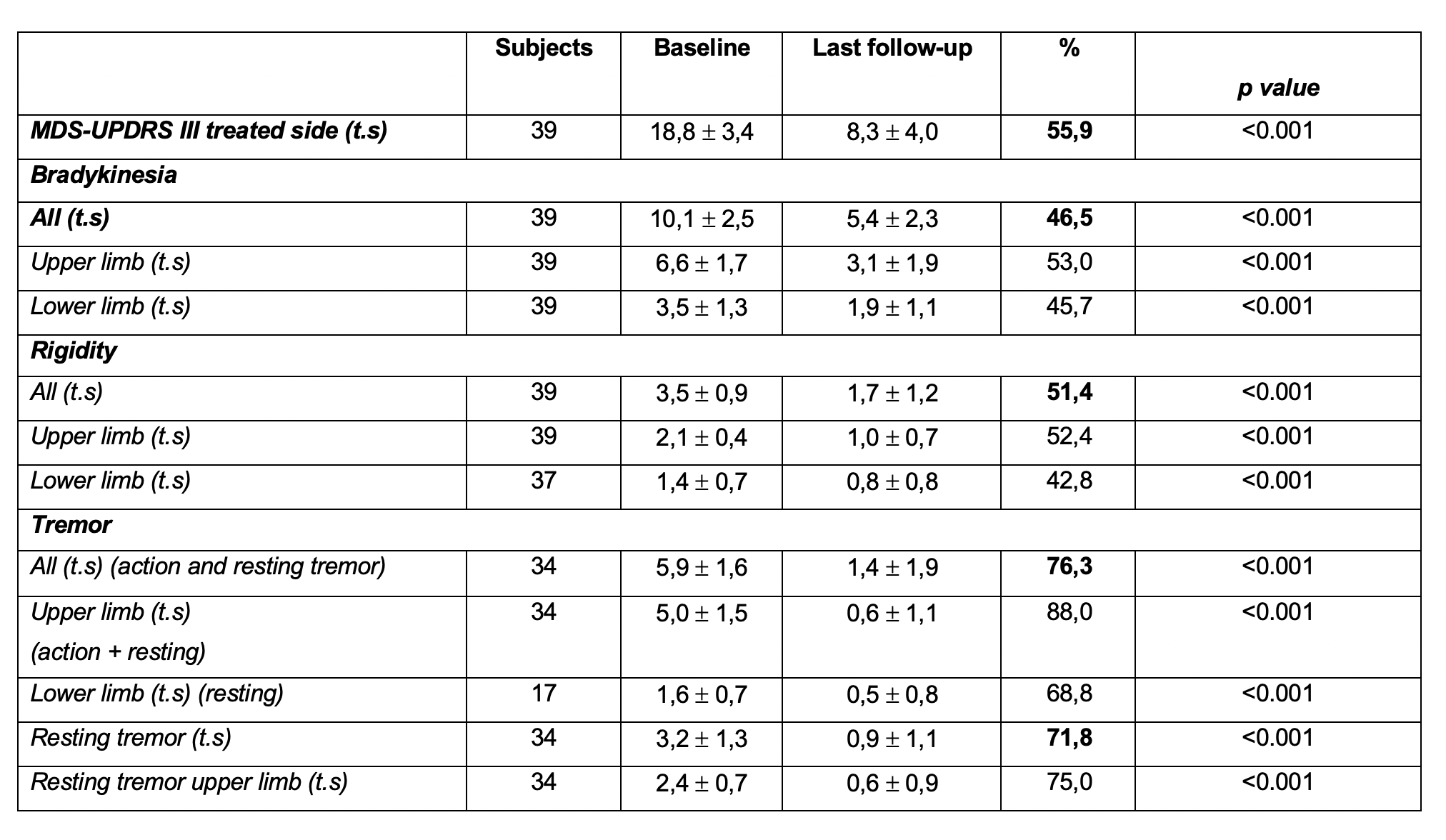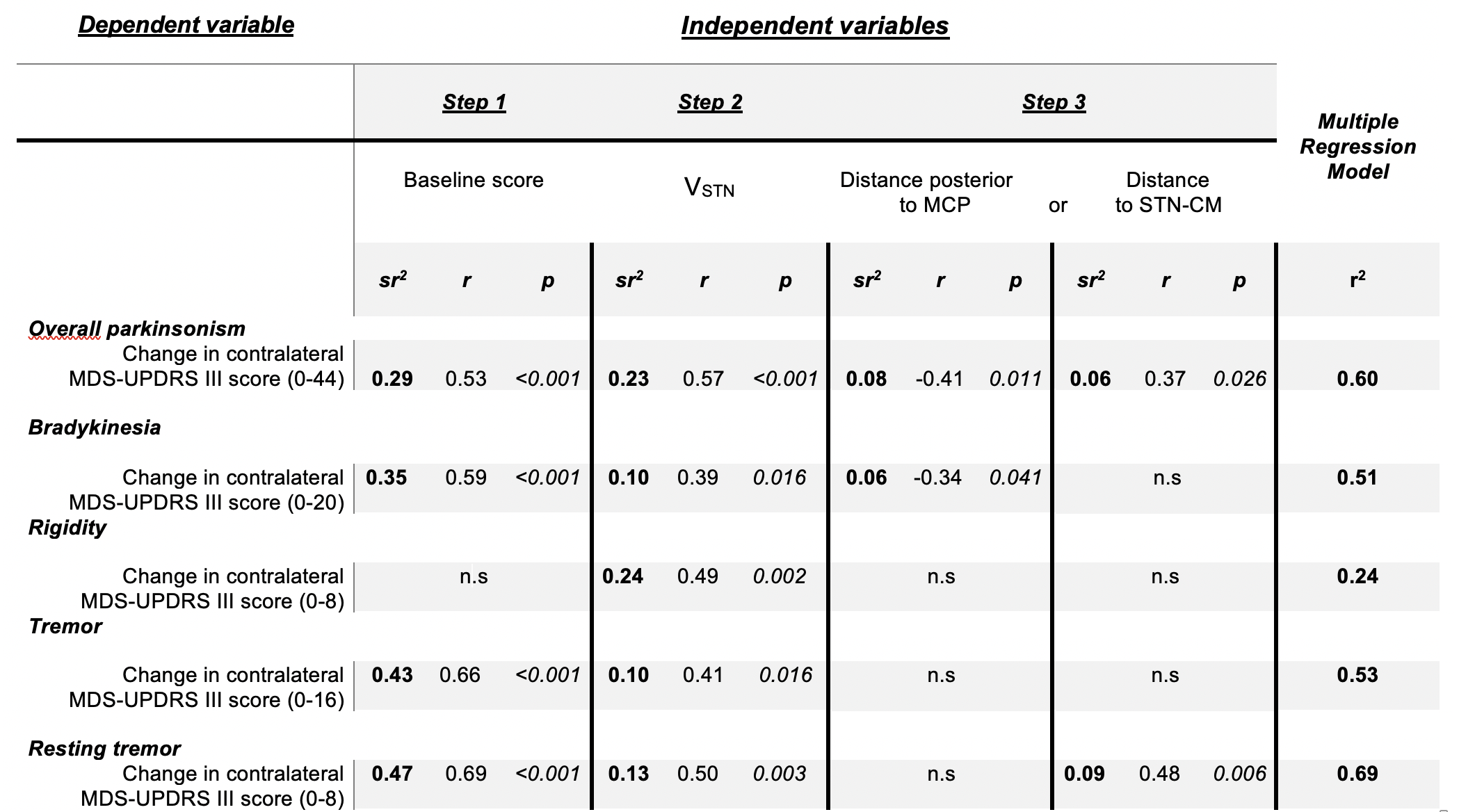Category: Surgical Therapy: Parkinson's Disease
Objective: To describe the topography of unilateral focused ultrasound (FUS) subthalamotomy in Parkinson’s disease (PD), and define correlations between lesion size/location and improvement of cardinal signs.
Background: We have shown [1,2] safety and efficacy of FUS unilateral subthalamotomy for the treatment of all cardinal PD motor features.
Method: We analyzed volume and location of STN lesions in the T1/T2 MR(3T) images at 24-hours post-procedure in 39 PD patients (Table 1 for baseline details) treated unilaterally. Lesion topography was correlated to changes in the motor UPDRSm from baseline to last follow-up in the “off” medication state. Sub-items for bradykinesia, rigidity and tremor from body side contralateral to subthalamotomy were scored and analyzed independently. Hierarchical multiple regression model (MRM) analyses were used to examine the relationship of lesion location to clinical outcome.
Results: Antiparkinsonian effect in the off state on the treated side was 55.9% and specifically change from baseline (%) was 54.4, 46.6 and 74.8 for rigidity, bradykinesia and tremor respectively (Table 2). Lesions were located within the subthalamic area with a total volume of 235,9 ± 131,5 mm3. According to a hierarchical MRM, motor improvement was attributable to the baseline scores, the lesion volume within the STN and the location (Table 3 for details). Efficacy on bradykinesia was explained by greater impact within the anterior motor STN whilst anti-tremor effect was associated with more lateral and posterior lesioning (Figure 1).
Conclusion: Improvement in cardinal motor features after unilateral FUS subthalamotomy is related to specific lesion topography within the motor STN, i.e., bradykinesia rostrally while tremor laterally and posterior. This suggests a segregation within the STN motor subregion for each specific motor feature.
References: 1. Martínez-Fernández R, Rodríguez-Rojas R, Máñez-Miró JU, et al. Focused ultrasound subthalamotomy in patients with asymmetric Parkinson’s disease: a pilot study. Lancet Neurol. 2018;17(1):54–63. doi:10.1016/S1474-4422(17)30403-9.
2. Rodriguez-Rojas R, Carballo-Barreda M, Alvarez L, et al. Subthalamotomy for Parkinson’s disease: clinical outcome and topography of lesions Journal of Neurology, Neurosurgery & Psychiatry 2018;89:572-578.
To cite this abstract in AMA style:
J. Mañez-Miro, R. Rodríguez-Rojas, J. Pineda-Pardo, M. Del álamo, R. Martinez-Fernandez, J. Obeso. Focused Ultrasound Subthalamotomy in Parkinson’s Disease: Lesion Topography and Motor Improvement. [abstract]. Mov Disord. 2022; 37 (suppl 2). https://www.mdsabstracts.org/abstract/focused-ultrasound-subthalamotomy-in-parkinsons-disease-lesion-topography-and-motor-improvement/. Accessed December 13, 2025.« Back to 2022 International Congress
MDS Abstracts - https://www.mdsabstracts.org/abstract/focused-ultrasound-subthalamotomy-in-parkinsons-disease-lesion-topography-and-motor-improvement/




